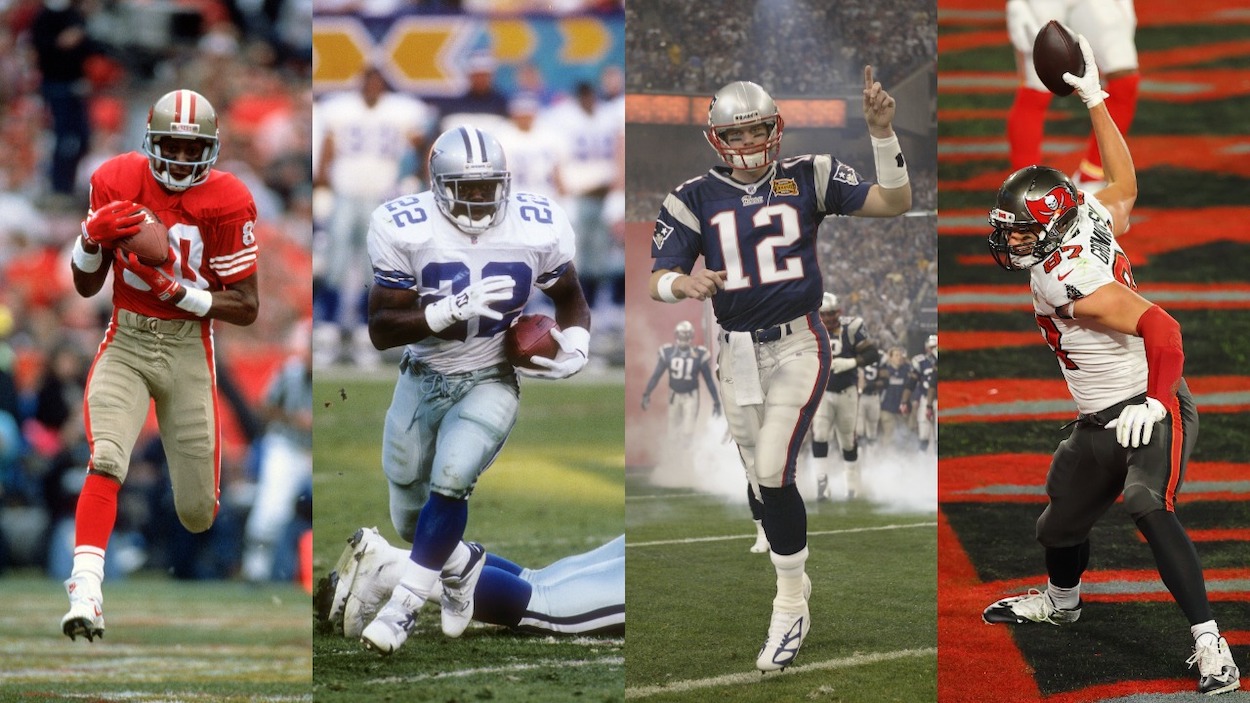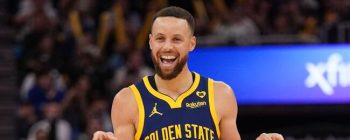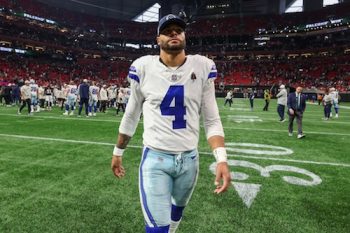NFL
Build Your Ultimate Super Bowl Offense with $15

As we get ready for Super Bowl 56, who would you take? Matthew Stafford, Cooper Kupp, and Cam Akers, or Joe Burrow, Ja’Marr Chase, and Joe Mixon? What if you had the best players and units in Super Bowl history to choose from? Well, that’s exactly what the challenge is here.
The goal is to create the ultimate Super Bowl offensive unit with a $15 budget. Your team must consist of a quarterback, wide receiver, running back, tight end, and offensive line. Check out the tiers below ($5, $4, $3, $2, $1) and mix and match to make the best offense possible without going over budget. Good luck!
And don’t forget to check out the Build Your Ultimate Super Bowl Defense, coming soon.
$5 Level

QB Tom Brady — New England Patriots, Tampa Bay Buccaneers
Stats: 10 Super Bowl appearances, seven wins, five Super Bowl MVPs, 3,039 yards, 21 TDs, six INTs
Tom Brady is simply the best of all time in the Super Bowl. He has, by far, the most of — well, everything in Super Bowl history. Also, the GOAT did it with two different teams and well into his 40s. Brady probably should be in his own $10 tier, but for this exercise, you can have him for $5.
WR Jerry Rice — San Francisco 49ers, Oakland Raiders
Stats: four Super Bowl appearances, three wins, one Super Bowl MVP, 33 catches, 589 yards, eight TDs
The greatest WR of all time didn’t shrink when the lights got bright. He was a monster for the San Francisco 49ers, putting up 148, 149, and 215 yards in his three appearances with the team, and he also added two three-touchdown games. What you may not remember is he had one more Big Game run at the end of his career with the Oakland Raiders in 2002.
RB Emmitt Smith — Dallas Cowboys
Stats: three Super Bowl appearances, three wins, one Super Bowl MVP, 289 rushing yards, 56 receiving yards, five TDs
Emmitt Smith’s Dallas Cowboys were three-for-three in the season’s final game, and Smith rushed for over 100 yards twice. He also had two two-touchdown games. The Cowboys RB was the motor that drove those Super Bowl teams, and — like in his regular-season career — he was simply more consistent than anyone else in history.
TE Rob Gronkowski — New England Patriots, Tampa Bay Buccaneers
Stats: five Super Bowl appearances, four wins, 29 catches, 364 yards, five TDs
Jerry Rice has more TD catches in the Big Game than Rob Gronkowski, but no tandem has more TD hookups than Gronk and TB12. The duo’s five scores beat Rice’s four from Montana (although the WR has three from Steve Young and one from Rich Gannon, too). Gronkowski is simply the most productive TE in the season’s final game, and he even missed a New England Patriots win vs. Atlanta Falcons due to injury.
OL Dallas Cowboys ’90s
Stats: three Super Bowl appearances, three wins, Notable Players: Mark Stepnoski, Nate Newton, Mark Tuinei, Erik Williams, Larry Allen
If Emmitt Smith was the engine that drove the Dallas Cowboys in the ’90s, his offensive lines were the giant wheels that ran over defenses. They helped Smith gain over 300 all-purpose yards, allowed just five sacks against some of the best defensive units of the era, and helped Big D put up 109 points in three games.
$4 Level
QB Joe Montana — San Francisco 49ers
Stats: four Super Bowl appearances, four wins, three Super Bowl MVPs, 1,142 yards, 11 TDs, 0 INTs
If New York Jets linebacker Mo Lewis never knocked Drew Bledsoe out of that fateful Week 2 game in 2001, Joe Montana is probably the best QB ever and at the top of this list. Since that did happen and Tom Brady exists, Montana will just have to settle for the No. 2 spot on the Super Bowl’s Mount Rushmore. He won close games. He won blowouts and, amazingly, never threw a pick in four Big Game appearances.
WR Lynn Swann — Pittsburgh Steelers
Stats: four Super Bowl appearances, four wins, one Super Bowl MVP, 16 catches, 364 yards, 3 TDs
This spot has to go to a Pittsburgh Steelers WR from the ’70s, but it is hard to choose between Lynn Swann and John Stallworth. Their stats are nearly identical with two excellent Super Bowls, one OK game, and one bust. It’s Swann’s Super Bowl 10 MVP Award (four catches, 161 yards, one TD) that gives him the upper hand here.
RB Terrell Davis — Denver Broncos
Stats: two Super Bowl appearances, two wins, one Super Bowl MVP, 259 rushing yards, 58 receiving yards, three TDs
Just like in his career, Terrell Davis did a lot of damage in a short amount of time during his two Super Bowls. He helped John Elway finally get over the hump and win his Lombardi Trophies. He also has the fifth-most carries in Big Game history in his two appearances. Plus, Davis’ 30-carry, 157-yard, three-touchdown, MVP-winning performance in Super Bowl 32 was a masterpiece.
TE Travis Kelce — Kansas City Chiefs
Stats: two Super Bowl appearances, one win, 16 catches, 176 yards, one TD
Travis Kelce already has an excellent Super Bowl stat line, and he’s probably not done. He was perfect (6-of-6) in his team’s 2019 win, but the better of his two games came in a losing effort in 2020 to the Tampa Bay Buccaneers. The Kansas City Chiefs didn’t have enough to deny Tom Brady his seventh title, but it wasn’t because of Kelce. The TE caught 10 balls on 15 targets for 133 yards in the losing effort.
OL Washington ’80s/’90s
Stats: four Super Bowl appearances, three wins, Notable Players: Joe Jacoby, Russ Grimm, Jim Lachey, Jeff Bostic, Mark Schlereth, and Mark May
“The Hogs” are one of the best-known offensive line groups in NFL history. Despite having just one Hall of Famer (Russ Grimm), this unit led three different QBs (Joe Theismann, Doug Williams, Mark Rypien) and three different RBs (John Riggins, Timmy Smith, Earnest Byner) to the Promised Land. They’re also responsible for the biggest rushing day in Super Bowl history with Smith’s 204 yards in Super Bowl 22.
$3 Level
QB Peyton Manning — Indianapolis Colts, Denver Broncos
Stats: four Super Bowl appearances, two wins, one Super Bowl MVP, 1,001 yards, 3 TDs, 5 INTs
Peyton Manning was one of the greatest regular-season QBs ever but was a mixed bag when it came to the postseason. This bears itself out with his two W’s, two L’s, and negative TD to INT ratio in the biggest games. What Manning proved with the ’06 Indianapolis Colts and the ’15 Denver Broncos is that, with the right team around him, he can get the job done with ease.
WR Michael Irvin — Dallas Cowboys
Stats: three Super Bowl appearances, three wins, 16 catches, 256 yards, 2 TDs
“The Playmaker” made plenty of plays to get the Dallas Cowboys to their three Super Bowls in the ’90s but didn’t need to do much to help his team defeat overmatched AFC teams. Irvin’s Cowboys won their three trophies by a combined 62 points, so passing wasn’t all that important late in games. Still, the former Miami Hurricane crushed it in his first Big Game appearance, putting up 114 yards on six catches and scoring twice against the Buffalo Bills.
RB Franco Harris — Pittsburgh Steelers
Stats: four Super Bowl appearances, four wins, one Super Bowl MVP, 354 rushing yards, 114 receiving yards, four TDs
In Super Bowl 9, Franco Harris dominated with 34 carries for 158 yards on his way to the MVP Award. After that, the Steelers RB was a solid contributor to the next three Lombardi Trophies. In each of these games, he had 90-plus all-purpose yards as an integral part of his team’s passing and rushing attack. Harris’ pass-catching ability was ahead of his time, which means he would pair well with a modern QB.
TE Jay Novacek — Dallas Cowboys
Stats: three Super Bowl appearances, three wins, 17 catches, 148 yards, two TDs
While deep passing wasn’t needed for the ’90s Dallas Cowboys, blocking for Emmitt Smith and catching short passes to move the changes and keep the clock running was the order of the day. That’s why Jay Novacek was such a valuable piece for his team. If the plan is to blow the opponent out early and coast to zeroes on the clock, Novacek is the TE you want.
OL Pittsburgh Steelers ’70s
Stats: four Super Bowl appearances, four wins, Notable Players: Jon Kolb, Sam Davis, Ray Mansfield, and Mike Webster
The big men up front for the dynastic Pittsburgh Steelers of the ’70s dominated teams when the Lombardi Trophy was on the line. The O-line helped the Steelers’ offense scored 103 points in four Big Games while paving the way for 548 total rushing yards and allowing eight sacks while protecting Terry Bradshaw.
$2 Level
QB Ben Roethlisberger — Pittsburgh Steelers
Stats: three Super Bowl appearances, two wins, 642 yards, 3 TDs, 5 INTs
“Big” Ben Roethlisberger wasn’t overpowering in his Big Game career, but he won more than he lost, and, with a good defense on his side, Roethlisberger could manage a game with the best of them. The 6-foot-5, 240-pound signal-caller also showed his late-game mettle in 2008, leading a 78-yard game-winning drive with just 2:02 left on the clock and hitting Santonio Holmes in the end zone to win the game.
WR Julian Edelman — New England Patriots
Stats: four Super Bowl appearances, three wins, one Super Bowl MVP, 24 catches, 337 yards, 1 TD
Julian Edelman had some major Big Game highlights in his career. He scored the game-winning touchdown against the Seattle Seahawks and reeled in an amazing (and crucial) juggling catch against the Atlanta Falcons. Edelman was also the MVP of Super Bowl 53, where the New England Patriots paper-cutted the LA Rams to death to win 13-3. Edelman’s not the flashiest WR here, but he always seems to get the job done.
RB Marcus Allen — Los Angeles Raiders
Stats: one Super Bowl appearance, one win, one Super Bowl MVP, 191 rushing yards, 18 receiving yards, two TDs
Marcus Allen packed an impressive Big Game career into one game. In 1983, Allen basically single-handedly took out an early incarnation of Washington and the Hogs. He carried the ball 20 times for 191 yards and two TDs as the Raiders crushed their opponent 38-9 and won coach Tom Flores his second title.
TE Shannon Sharpe — Denver Broncos, Baltimore Ravens
Stats: three Super Bowl appearances, three wins, eight catches, 69 yards, zero TDs
Shannon Sharpe played in three Super Bowls for two teams, and only one game was close. In that game (Denver Broncos vs. Green Bay Packers, 1997), Sharpe was a perfect 5-of-5 for 38 yards. The rest of the time, he simply helped spring 100-yard rushers and cruised to victory. Both Terrell Davis (twice) and Jamal Lewis hit the century mark with Sharpe in front of them.
OL Denver Broncos ’90s
Stats: two Super Bowl appearances, two wins, Notable Players: Gary Zimmerman, Tom Nalen, Tony Jones, Mark Schlereth, and Brian Habib
Two Big Game appearances in a row and two wins puts the ’90s Denver Broncos line here. For all the heroics that we celebrate from Terrell Davis and John Elway on those back-to-back Broncos teams, none of it would have been possible without the line up front. This line created 300 rushing yards and 65 points in the two games and kept Elway’s jersey clean (except when he helicoptered into the end zone) by allowing zero sacks.
$1 Level
QB Eli Manning — New York Giants
Stats: two Super Bowl appearances, two wins, two Super Bowl MVPs, 541 yards, 3 TDs, 1 INTs
Down by four, two minutes to go, the best team in the league starring across the line, and 80 yards to go for ultimate glory, who else do you want under center other than Eli Manning? This isn’t a build your ultimate regular-season team exercise. This is all about the money game, and, in his two victories over the New England Patriots, Eli Manning was money. With the Lombardi Trophy on the line, there honestly might be no one better than Peyton’s little brother. Just ask Tom Brady.
WR Andre Reed — Buffalo Bills
Stats: four Super Bowl appearances, zero wins, 27 catches, 323 yards, zero TDs
Andre Reed and the Buffalo Bills famously never won the Big Game, but it wasn’t Reed’s fault. He averaged almost seven catches a game and over 80 yards per game in the Super Bowl. Although he never found the end zone, he made for a reliable target even as teams knew Jim Kelly had to air it out to Reed in order to come back in three of their four Big Games together.
RB John Riggins – Washington
Stats: two Super Bowl appearances, one wins, one Super Bowl MVP, 230 rushing yards,16 receiving yards, two TDs
At 6-foot-2, 230-pounds, John Riggins was (mostly) a three yards and a cloud of dust back behind his Hogs. However, he did have breakaway speed when he needed it. Riggo broke a game-winning 43-yard run in the fourth quarter of Super Bowl 17 against the Miami Dolphins to snatch the Lombardi Trophy from Don Shula and company and win the RB an MVP Award in the process. Riggins didn’t fare as well in his second Big Game against the LA Raiders a year later, but he gave a valiant effort with 26 carries for 64 yards in defeat.
TE Mark Bavaro — New York Giants
Stats: two Super Bowl appearances, two wins, nine catches, 101 yards, one TD
The longtime New York Giants TE was never flashy but always consistent, and Mark Bavaro’s two Super Bowl performances proved that. He had four catches for 51 yards and a TD in ’86 against the Denver Broncos and five catches for 50 yards in ’90 against the Buffalo Bills. The G Men also had over 160 yards rushing in both those games, and Bavaro was a crucial part of that, too.
OL Oakland/Los Angeles Raiders ’70s/’80s
Stats: three Super Bowl appearances, three wins, Notable Players: Art Shell, Gene Upshaw, Dave Dalby, and Henry Lawrence
Much like the Washington O-lines that would come around a decade later, these Raiders road-graders won their titles with varying casts of characters behind them from ’76-’83. This line won titles with two different coaches (John Madden, Tom Flores), two different QBs (Kenny Stabler, Jim Plunkett), and three different leading rushers (Clarence Davis, Mark van Eeghen, Marcus Allen). Art Shell and Gene Upshaw are the Hall of Famers, but center Dave Dalby is the piece that links all three championship lines together.
All stats courtesy of Pro Football Reference











